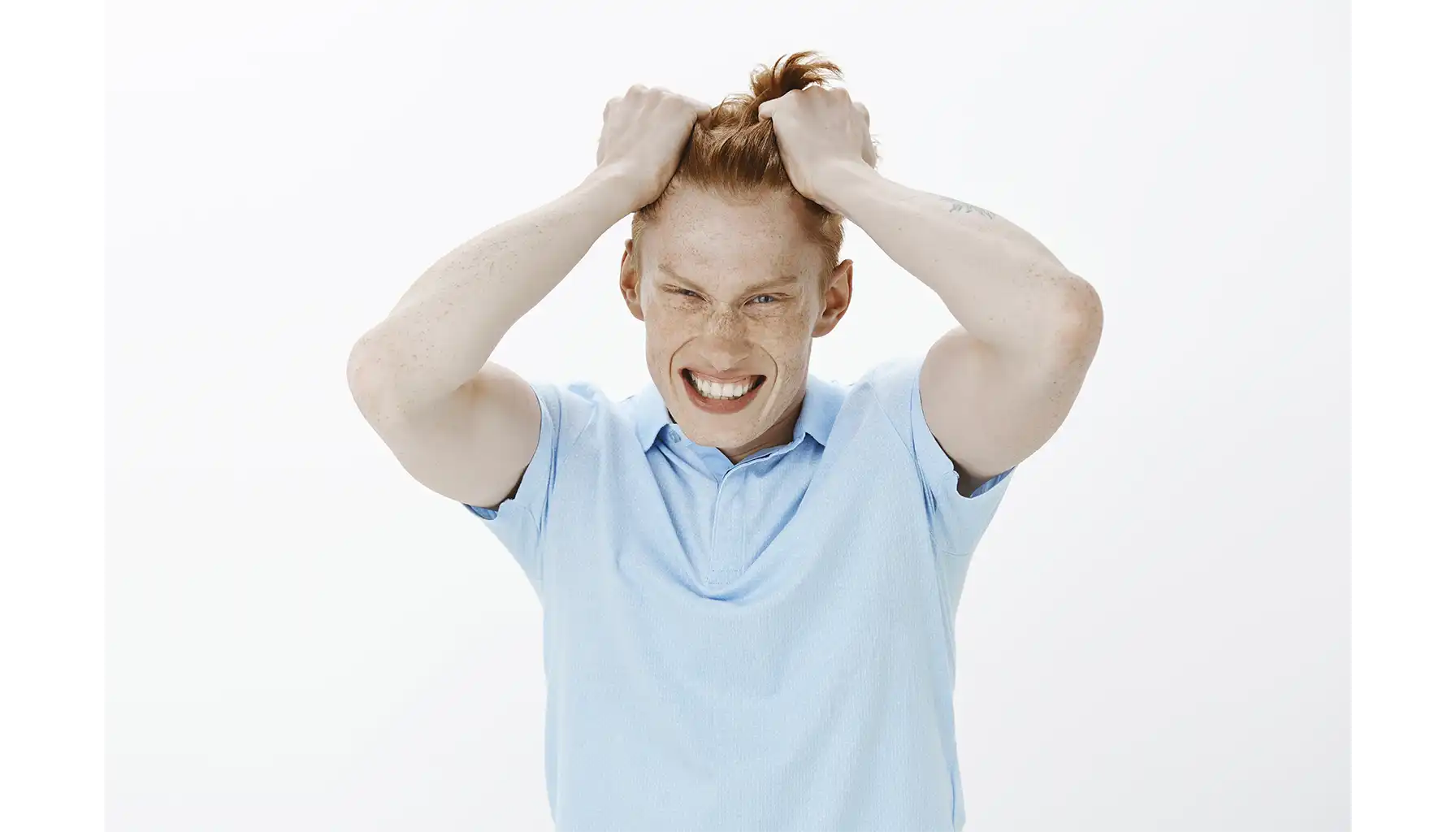Signs of Autism: How to Recognize Key Indicators

Contents:
Recognizing the early sign of autism can help individuals and families find support sooner. Today we will together understand the key indicators from childhood to adulthood. Fortunately, there are many brain exercises available today that can improve cognitive function at any age. You can try them for free in the Mind Elevate app.

What is Autism Spectrum Disorder?
Autism is a developmental condition that begins in early life and affects how a person's brain functions. It is called a "spectrum" because the signs and their intensity can vary greatly from one person to another. Some individuals with autism may need significant support, while others might require less. People with autism often have unique ways of learning, moving, and focusing their attention.
Here is a simple table with some general well-known features:
Feature | What it means |
Social Communication | It can be hard to talk to others or understand feelings. A person can not look at people's faces much. |
Repetitive Behaviors | You might like to do the same things many times, like lining up toys. A person can have special interests. |
Sensory Sensitivities | Some sounds, lights, or textures can feel very strong or uncomfortable. Or, a person can not notice some things. |
Routines | A person can like things to be the same every day. Changes can be hard. |
Early Signs in Babies and Toddlers
Spotting a sign of autism in baby can be challenging because every child develops at their own pace. However, certain patterns might suggest a need for closer observation. For instance, some parents wonder if late teething sign of autism is a concern, though this is not typically a direct indicator of ASD.
A more common observation might be a lack of interest in social games like peek-a-boo. They might not respond when their name is called, or they may avoid eye contact. Toddlers might not point to things they want or are interested in. At that age there are many similar features that could be misunderstood as ADHD signs.
Another area to observe is motor development. Key early indicators often involve social interaction and communication. They might also show little interest in other children playing nearby. Repetitive behaviors can also appear early.
For example, some children might arrange toys in precise rows instead of playing with them imaginatively. Intense reactions to sensory input might also be observed in young children.
Signs in Children (School Age)
As children grow, autism sign can become more noticeable, particularly in social settings like school. Conversations can be difficult for them, as they might not know how to start or end a chat. Some children might talk a lot about one specific topic they love, without noticing if others are interested.
Sometimes, parents ask, is stuttering a sign of autism? While stuttering can occur as a sign of autism in toddlers, it is not a unique or primary sign. Instead, speech might be monotone or have an unusual rhythm. They might also repeat words or phrases they have heard, which is called echolalia.
Behavioral traits become more apparent. For example, is hand flapping a sign of autism? Yes, hand flapping is a very common repetitive behavior. These actions are often a way for individuals to regulate their emotions or respond to sensory input.

Signs in Teenagers
During the teenage years, social pressures increase, and signs can become more obvious. They might prefer to spend time alone rather than with friends. Forming and maintaining romantic relationships can also be very challenging.
Communication difficulties can persist. Some teenagers might continue to struggle with understanding non-literal language, often taking things very literally. So, is talking to yourself a sign of autism in teenagers, especially if it's frequent or disruptive?
While talking to oneself can be a normal behavior, if it is frequent, prolonged, and appears disconnected from the environment, it could be part of an autistic communication style or self-regulation strategy.
Behavioral patterns might change or become more pronounced. Intense interests in specific subjects are common. For example, a teenager might know everything about trains or dinosaurs. They might also have strong routines and become upset if these routines are changed.
Signs in Adults
Recognizing autism in adulthood can happen for various reasons. Some adults might have learned to "mask" their autistic traits throughout their lives, making diagnosis difficult. Others might seek diagnosis after their children are diagnosed, realizing they share similar traits.
Communication patterns in adults might include a very direct way of speaking, sometimes seen as blunt. They might not understand social nuances or "reading between the lines."
Behavioral traits can include a strong need for routine and order. Sensitivities, which we will discuss next, are also very common in adults with autism.
Exploring Specific Behaviors and Sensitivities
Many behaviors associated with autism are ways people cope with their environment or regulate their emotions.
Sensory Responses
Is sensitivity to loud noises a sign of autism? Yes, many individuals with autism are highly sensitive to sounds. This means that ordinary noises, like a vacuum cleaner or a dog barking, can feel overwhelming or even painful to them. Such intense reactions are a common aspect of processing differences.
Is covering ears a sign of autism? This behavior often directly relates to sensory sensitivity. When sounds are too loud or distressing, an individual with autism might cover their ears to block out the noise and protect themselves from the overwhelming input.
Is overstimulation a sign of autism? Indeed, feeling overwhelmed by too much sensory input, whether it is bright lights, strong smells, certain textures, or a combination of these, is a very common trait. Overstimulation can lead to distress, meltdowns, or a need to withdraw from the environment.
However, there are many nuances in this matter, so it is best to consult a specialist, as many people consider overstimulation to be some of the phases during depression, without recognizing the actual signs of depression.

Repetitive Movements
Is rocking a sign of autism? Yes, repetitive movements like rocking are common. These actions, often called stimming, can help a person with autism cope with stress, excitement, or sensory overload.
Is rocking back and forth a sign of autism? This specific form of rocking is frequently observed and functions as a self-soothing action.
Is rocking yourself to sleep a sign of autism? While some neurotypical individuals might rock to sleep, if this behavior is a strong, consistent, and necessary part of an individual's sleep preparation, it can indicate a need for self-regulation even during sleep.
If you have difficulty falling asleep, you can improve the quality of your sleep by following basic sleep hygiene practices that influence mental health. And if you still feel the need to rock yourself to sleep, you can consult a specialist to address this issue.
Is spinning a sign of autism? Yes, spinning objects or oneself can be a repetitive behavior. This type of stimming might provide visual or vestibular (balance-related) sensory input that an individual is seeking or using to regulate their internal state.
Is humming a sign of autism? Repetitive humming or other vocalizations can be a form of self-regulation. These sounds might provide auditory input that is soothing or stimulating, helping the individual to manage their sensory environment or express internal states.
Is rubbing your feet together a sign of autism? This can be a repetitive self-soothing motion. Like other forms of stimming, it provides tactile or proprioceptive (body awareness) input that helps an individual with autism to feel calm or grounded.
Oral and Motor Habits
Is chewing on things a sign of autism? Yes, chewing on non-food items can be a sensory-seeking behavior. Individuals might chew on clothing, pencils, or other objects to gain specific oral input that helps them regulate their sensory system or cope with anxiety.
Is licking things a sign of autism? Licking objects or surfaces can be a way for individuals to explore their environment through taste and texture, or to seek specific oral sensory input.
Is knee walking a sign of autism? While less common than toe walking, knee walking can also be an unusual way of moving that is sometimes observed in individuals with autism.
Coping Mechanisms
Is head banging a sign of autism? Head banging, while concerning, can be a severe form of self-stimulatory or self-injurious behavior. It might be used to cope with extreme sensory overload, frustration, pain, or as a way to gain intense input.
Is thumb sucking a sign of autism? While common in young children, prolonged thumb sucking beyond typical age can sometimes be a self-soothing behavior in autism.
Is pocketing food a sign of autism? Yes, holding food in the cheeks without swallowing can be a sign of oral motor or issues related to eating.
There are many other factors that can help identify autism from an early age, and it's important not to judge based on a single action.
For individuals who struggle with verbal communication, learning sign language for autism can be a very helpful tool to express needs and thoughts.

When to Seek Evaluation
If you notice several of these signs, especially if they affect daily life, it is important to talk to a doctor or a specialist. Early diagnosis and support can make a big difference. Each person with autism is unique, and recognizing their specific needs is the first step towards providing effective help.





